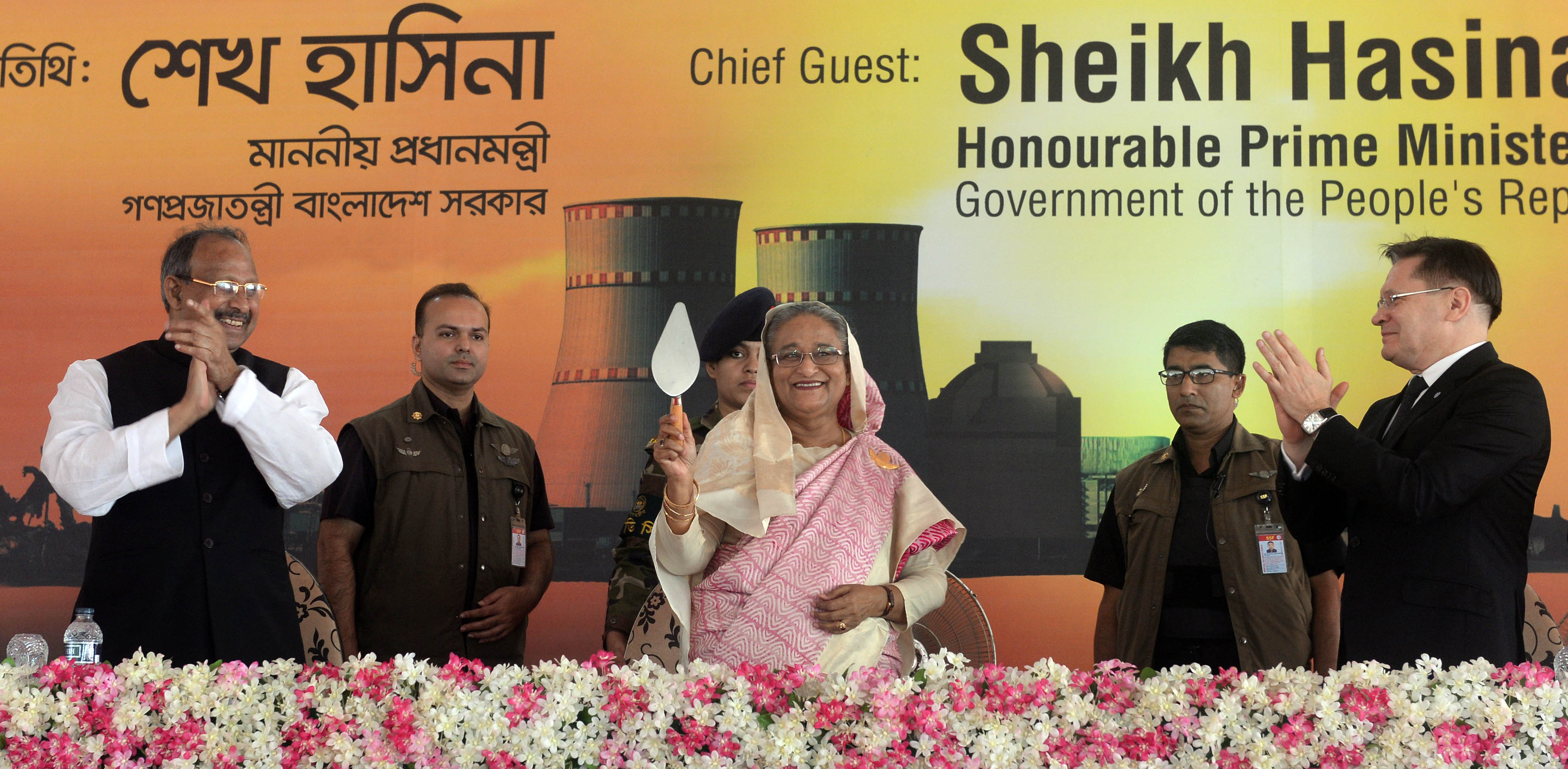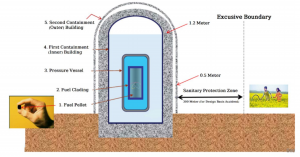
-
Rooppur Nuclear Power Plant is the first nuclear power plant in Bangladesh. This plant uses the process of nuclear fission to generate electricity.
Nuclear energy is a great carbon-free electricity source that in the present environmental and economic scenario, will be very beneficial to generate large amounts of electricity.
The Rooppur power plant will follow the safety guidelines and use the International Atomic Energy Agency (IAEA). The IAEA supported our country in assessing the development and sites of a radioactive waste management system for the nuclear power program.
If you want to know clearly about the Rooppur Nuclear Power Plant, Rooppur Nuclear Power Plant Contractor, so please stay with us.
What is a nuclear power plant?
The electricity generating station in which nuclear energy is converted into electrical energy is called a nuclear power plant.
A nuclear power plant looks like a standard thermal power station. The heat source of this power plant is a nuclear reactor. This plant is used as a nuclear fission process to generate electricity.
As is typical in all conventional thermal power stations, heat is used to generate steam, which drives a steam turbine connected to a generator that produces electricity.
Most of the nuclear power plant reactors are thermal reactors. And they use a neutron moderator to slow neutrons. Nuclear Power Plant is more environment friendly.
History of Rooppur Nuclear Power Plant:
In 1961, the construction of a nuclear power plant was first proposed in the west of Bangladesh.
In 1963, this power plant was approved.
After independence in 1972-75, the then Prime Minister of the independent Bangladesh Sheikh Mujibur Rahman took the initiative in building a nuclear power plant with a capacity of 200MW but the construction got postponed due to some difficulties.
On 13 May 2009, A MOU was signed between BAEC and ROSATOM, the State Atomic Energy Commission, Russian Federation.
On 21 May 2010, A framework agreement on cooperation in using Nuclear Energy for peaceful purposes was signed between Bangladesh and Russian Federation.
On 2 November 2011, the inter-government agreement (IGA) was officially signed.
On 20 October 2013, the honorable Prime Minister of Bangladesh Sheikh Hasina laid the foundation stone of the first nuclear power plant of Bangladesh.
JSC Atomstroyexport and BAEC has signed the first contract on the feasibility information, site engineering survey and environmental studies and impact assessment of Rooppur NPP on 27 June, 2013 and they signed the second contract for development of the design documentation, first priority working documentation and necessary Engineering survey for Rooppur NPP on 2 October 2013.
In November 2017, construction of the first unit of RNPP was commenced, with commissioning due in 2023. The second unit construction of RNPP was commenced construction in July 2018, and it is expected to be completed in 2024. Each unit is expected to have a capacity of 1200MW.
Location of Rooppur Nuclear Power Plant:
The Rooppur Power Plant will be a 2.4 GWe nuclear power plant in Bangladesh. The power plant is being constructed at Rooppur site in the Ishwardi Upazila of Pabna District, on the bank of river Padma. It is about 140-160 km west of Dhaka and in the northwest of the country.
This plant will be the country’s first nuclear power plant, and a location map is available. The first of two units of the power plant is expected to go into operation in 2023.
The critical infrastructure and VVER-1200 Nuclear reactor are being built by the Russian State Atomic Energy Corporation, Rosatom.
Construction of Rooppur NPP:
The Rooppur NPP is being constructed under the General Contract that includes detailed engineering design, civil construction, procurement, supply of equipment and materials and transportation them to the site, inspection, installation, testing, commissioning, comprehensive demonstration test of equipment and related works, training of the Rooppur NPP personnel for management, operation & maintenance and handover of the plant to the customer.
Civil construction activities of different nuclear and non-nuclear facilities and supply of equipment and materials are progressing according to the schedule.
The Rooppur NPP will have two units, each with power generation capacity of 1,200 MWe. The pouring of the first nuclear safety-related concrete at Rooppur NPP Unit-1 was on 30 November 2017. The first concrete pouring to the basement of the first unit was the beginning of the nuclear construction activities.
BAERA granted approval for the concrete pouring on the foundation of plate of Reactor Building including transport Portal of Unit-1 on 18 February.
Casting of First Concrete of 1st unit of Rooppur NPP by Honorable Prime Minister Sheikh Hasina on 30 November, 2017
The concrete pouring works for the foundation plate of Unit-1 has been completed with due compliances of the design requirements, licensing conditions of Design and Construction License of Unit-1 and all other regulatory requirements of BAERA. Presently, the civil and construction works for development of the containment walls, outer walls, inner walls, reactor pit walls, core catcher placement foundation and core catcher walls are being performed.
The First Unit of Rooppur NPP will be producing electricity on experimental basis at the beginning of 2023, provisional take over and final takeover being expected to be at the end of 2023 and 2024, respectively.
Nuclear Fuel for Rooppur Nuclear Power Plant:
The Mixed Oxide nuclear fuel is made from reprocessed uranium and plutonium. It’s a process of nuclear reprocessing.
Uranium is the most widely used as fuel by nuclear plants for nuclear fission. Rooppur Nuclear Power Plant will use a specific type of uranium—U-235 as the best fuel.
Electricity sector:
The Rooppur NPP will become an important driver of social and economic development of Bangladesh and make a sizable contribution to the country’s energy mix. In 2018, Bangladesh’s power generation capacity reached 20,000 MW. The Bangladesh government is planning to generate 24,000MW by 2021 and 40,000MW by 2030.
Positive aspects of nuclear power plants:
- Low Greenhouse Gas Emissions.
- High power output.
- Inexpensive electricity.
- Nuclear energy doesn’t rely on fossil fuels.
- Nuclear power offers a vast array of benefits to the economy.
Safety features of Nuclear Power Plant:
The design of Ruppur NPP meets the high level of safety required worldwide for future NPP. Reliable five layers of barriers prevent the radiation exposure to people and environment even in the worst-case scenario.
The reactor’s design feature is layered safety barriers preventing radiation exposure and protecting people and the environment. The reactors include five layers of barriers:
- Fuel Pellets.
- Fuel Cladding.
- Pressure Vessel.
- First containment (Inner Building).
- Second containment (Outer Building).

Figure: Five layers of barriers to prevent radiation exposure to people and the environment.
In case of a severe accident with extreme power loss due to grid failure (like Fukushima NPP accident) the Rooppur NPP will remain safely shut-down for at-least 72 hours without the involvement of external assistance and off-site power supply.
The Rooppur NPP will have two VVER-1200 nuclear reactor. VVER-1200 is a flagship nuclear reactor and a core product of ROSATOM’s integrated solution. VVER-1200 has a 20% higher power capacity while having a size comparable to VVER-1000.
It also has an extended 60-year service life, load following capability, high capacity utilization (90%), and an 18-month refueling cycle. VVER is a thermal neutron reactor with pressurized water used both as coolant and moderator.
Conclusion:
The Rooppur Nuclear Power Plant (RNPP) project is confirmed by feasibility studies conducted in the past. It has been considered economically, technically, and financially viable and environmentally acceptable as an option in the long-term sustainable electricity generation of the country.
The government is willing to take the necessary steps to implement this project for secured electricity supply to sustain our country’s economic development.
If you enjoyed our article and think it was beneficial, don’t forget to share it with others.
Source:

